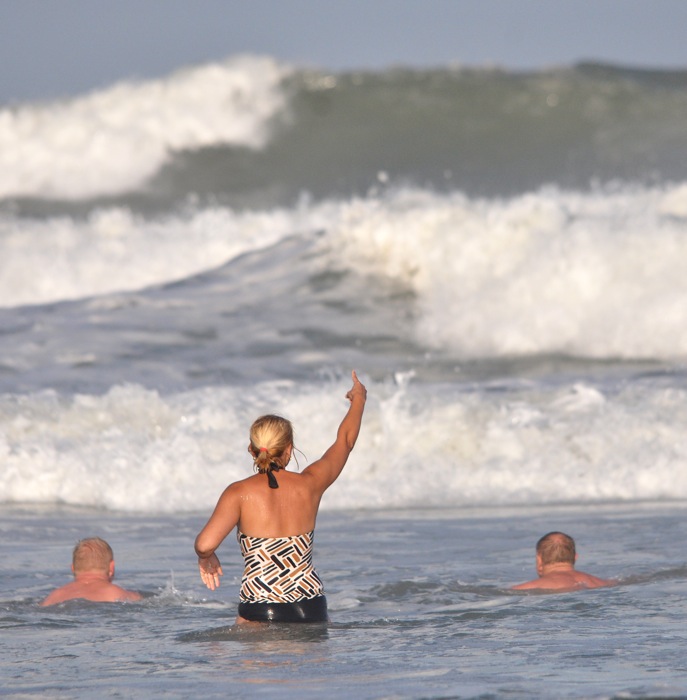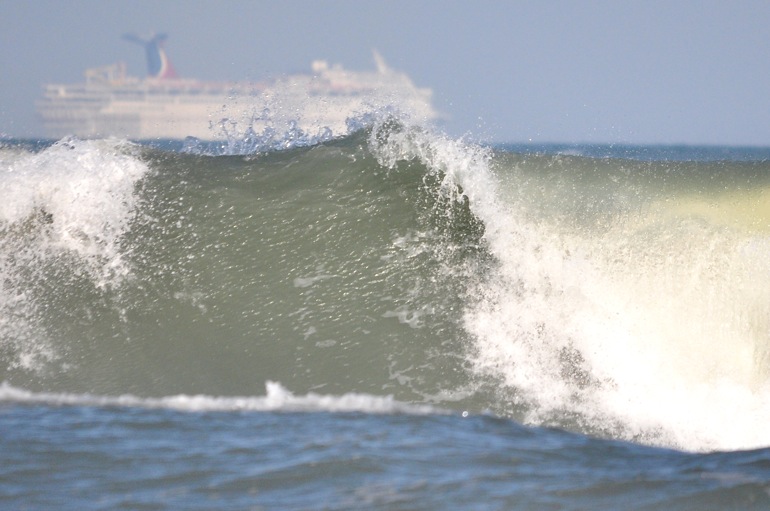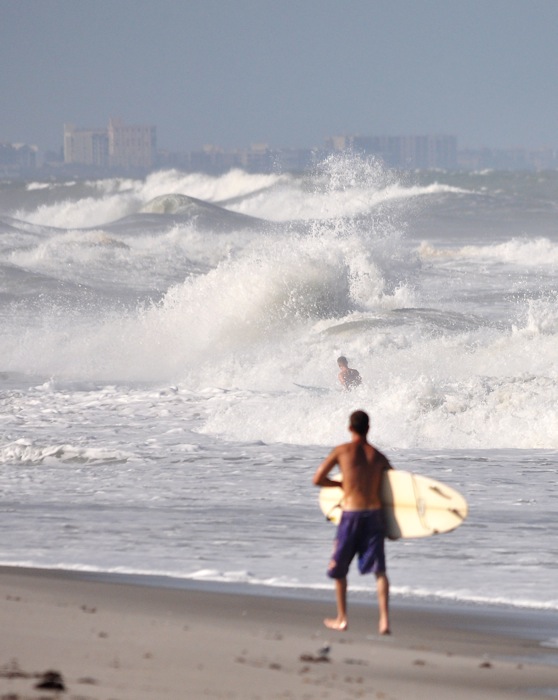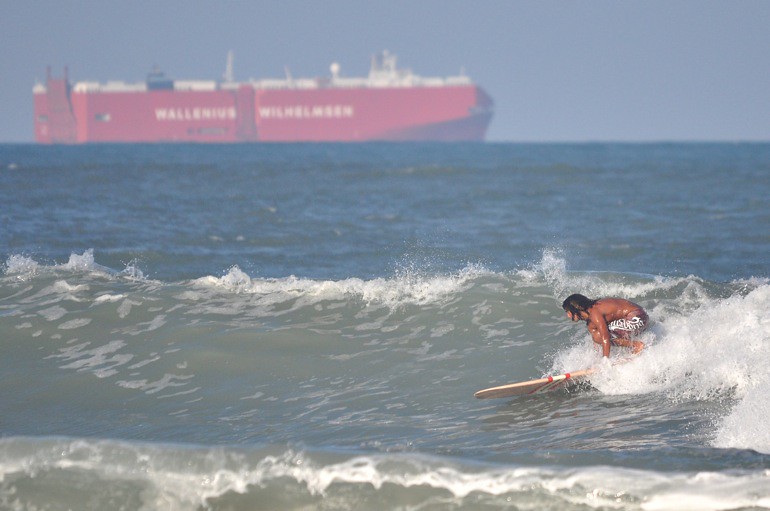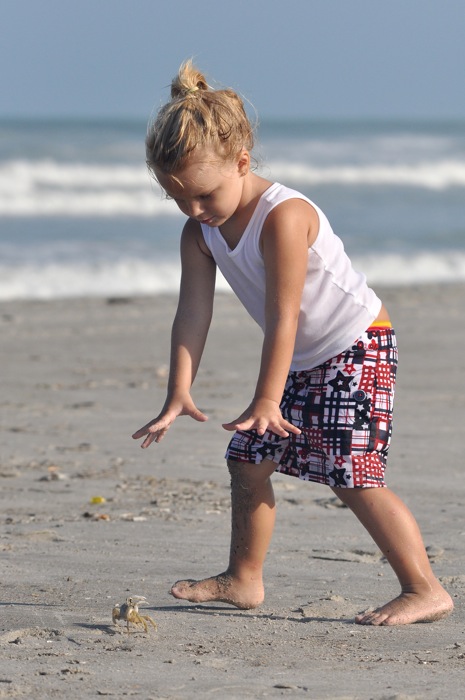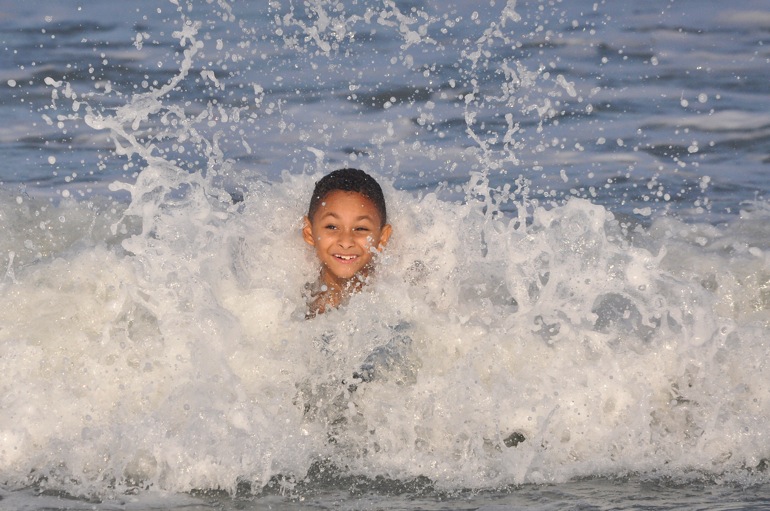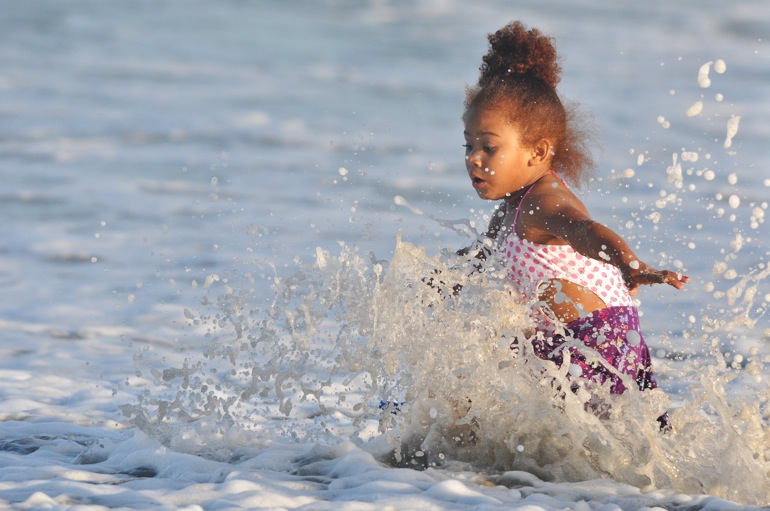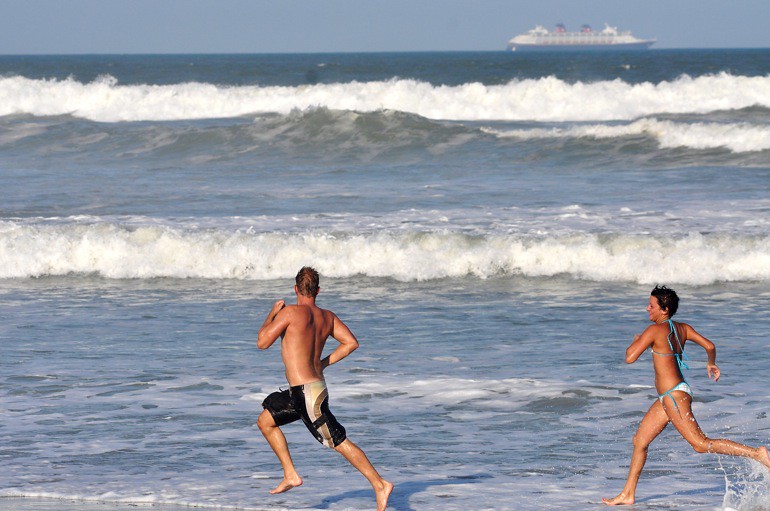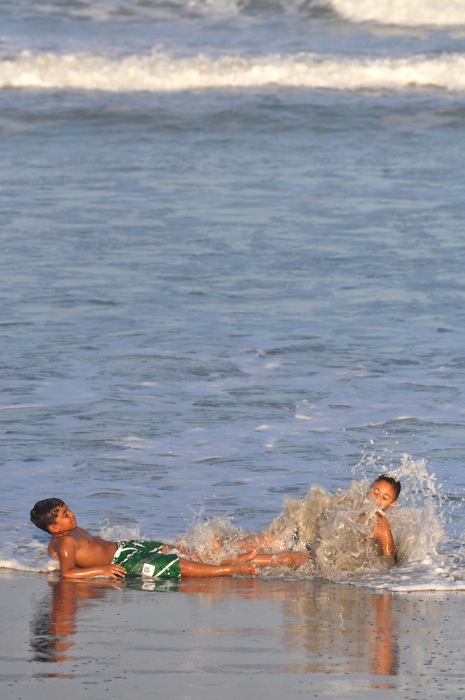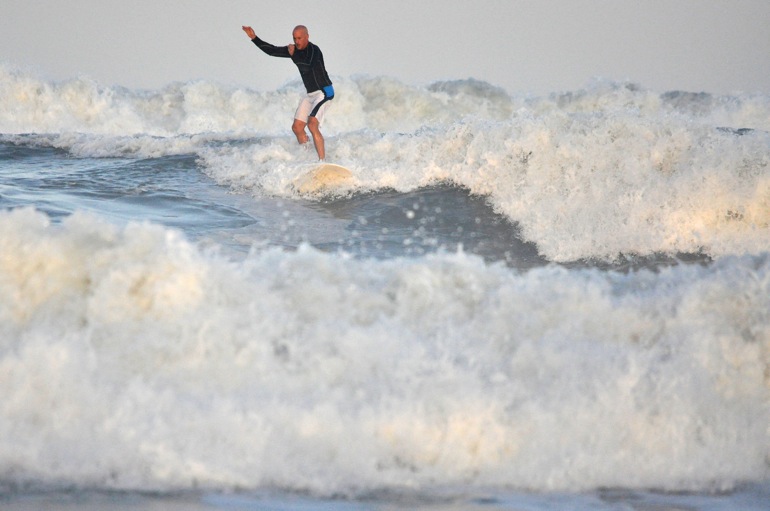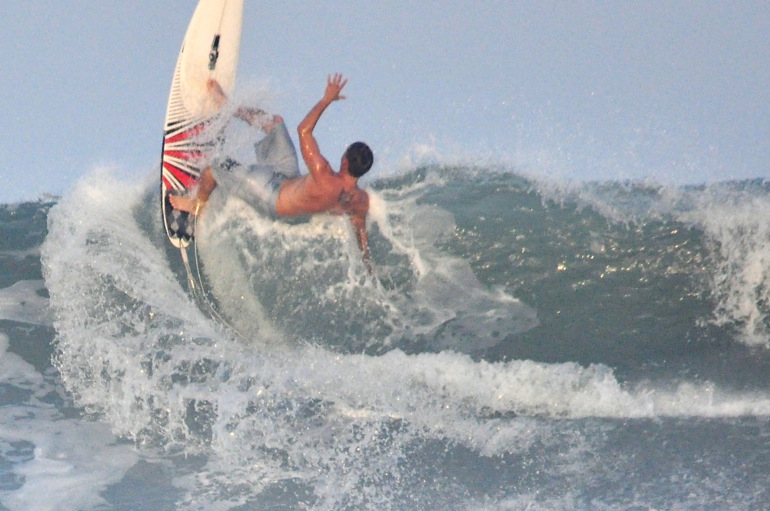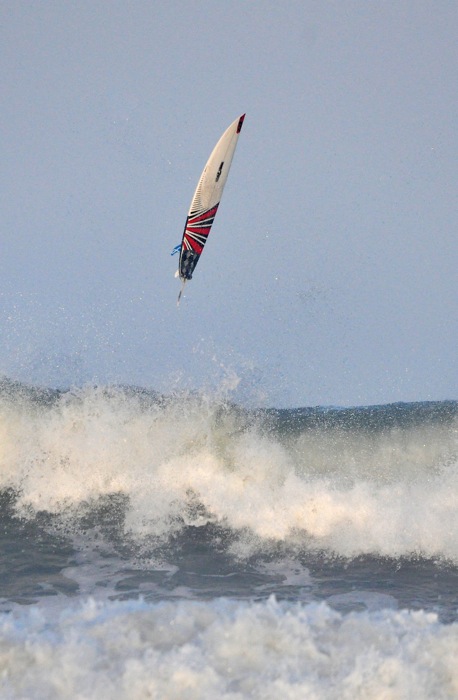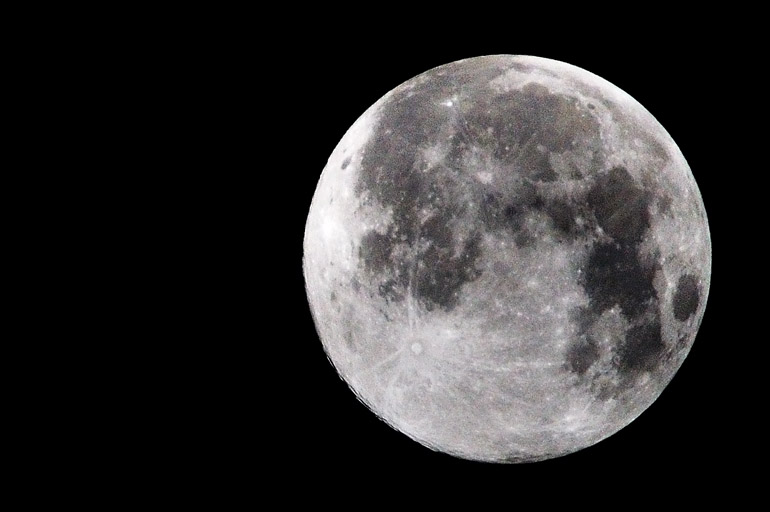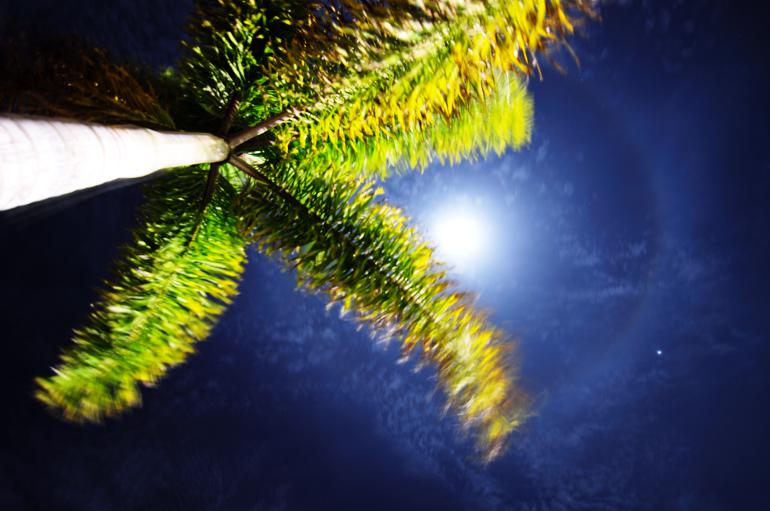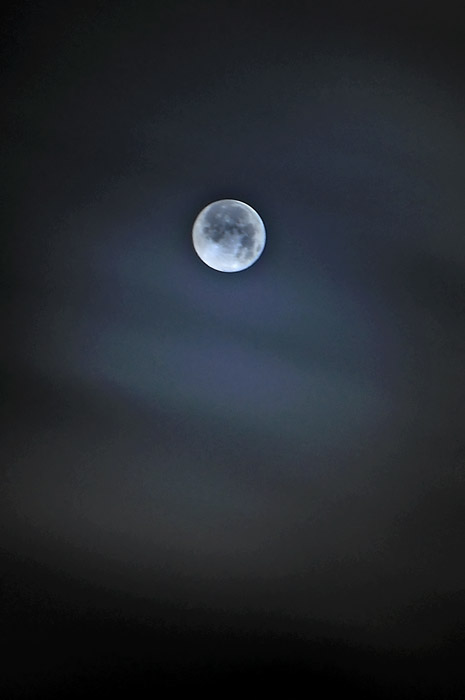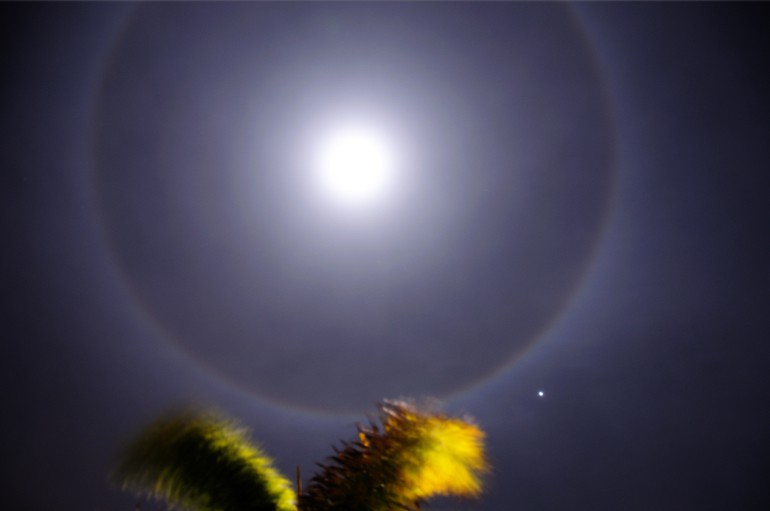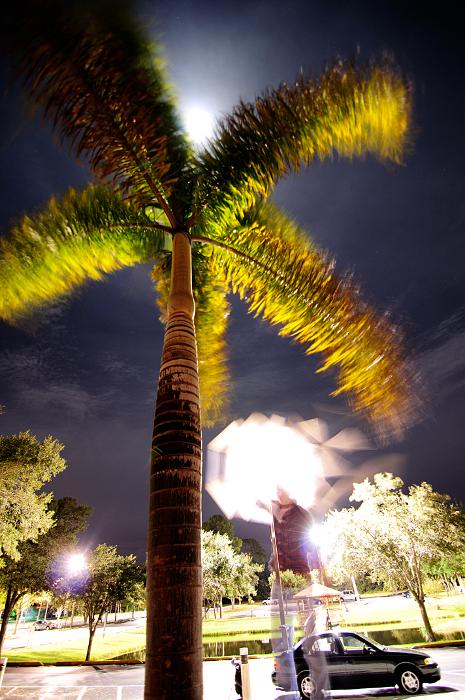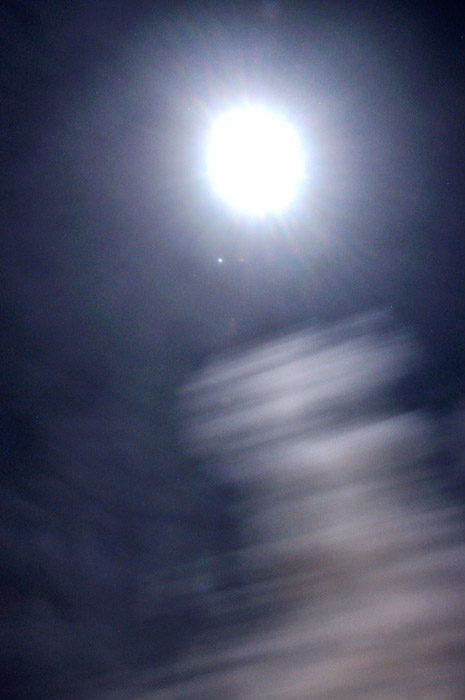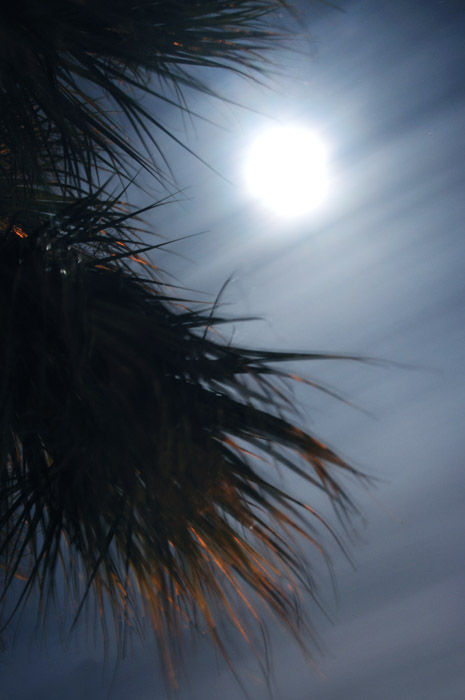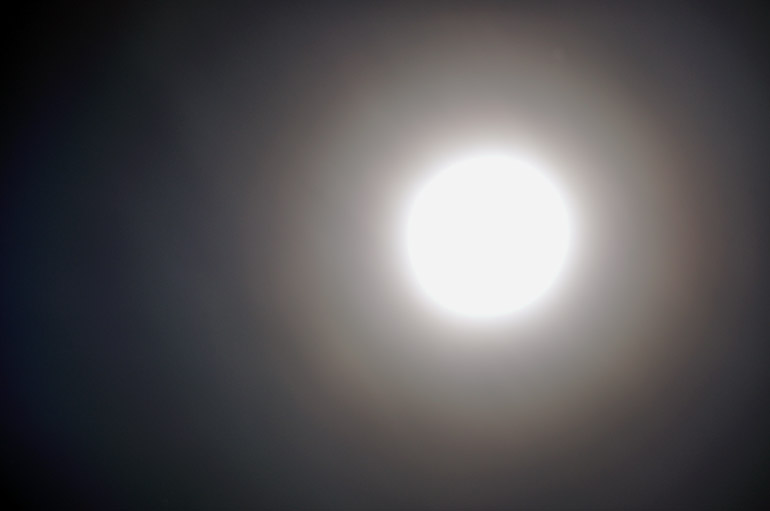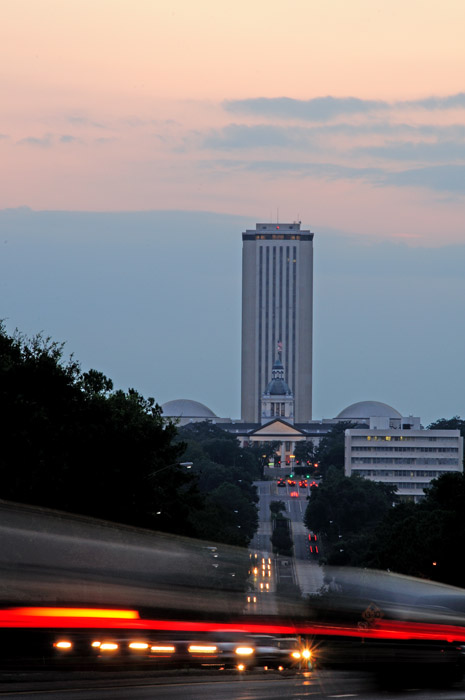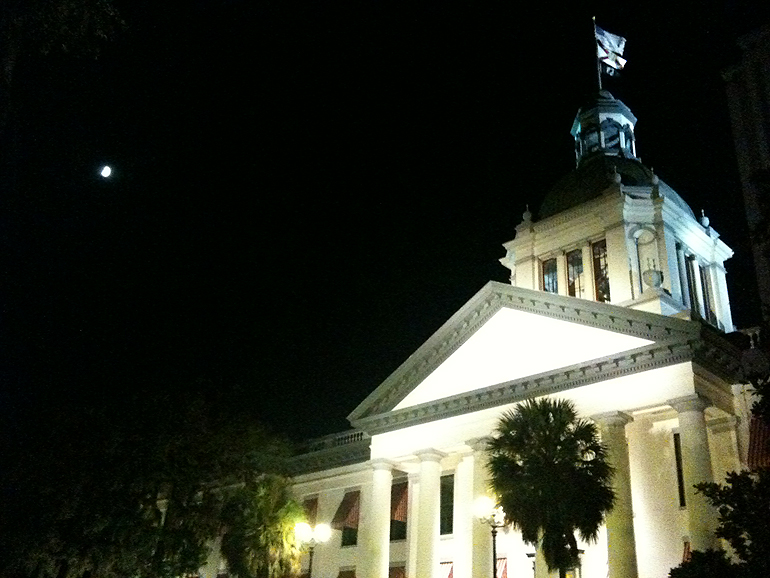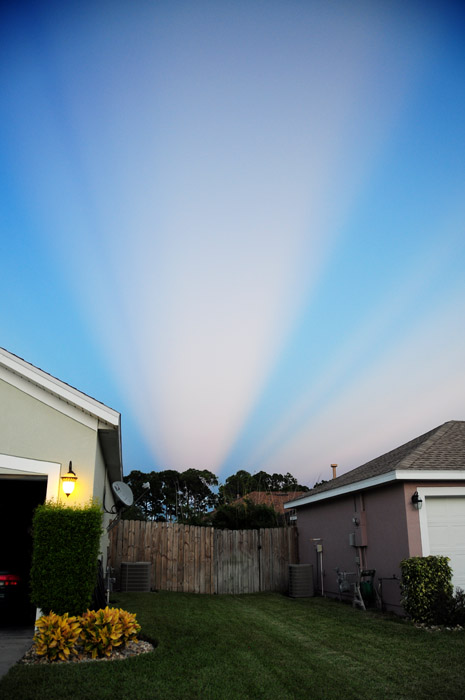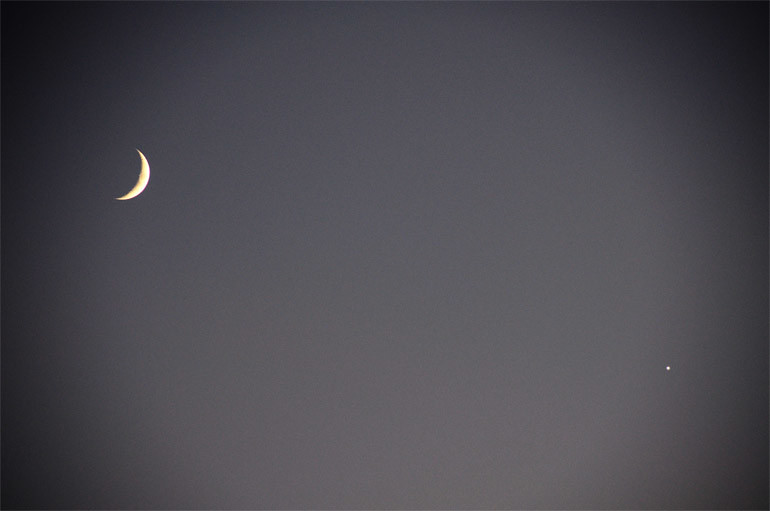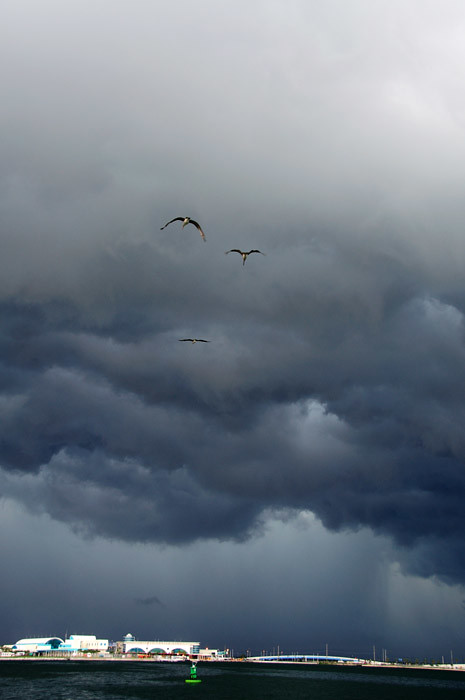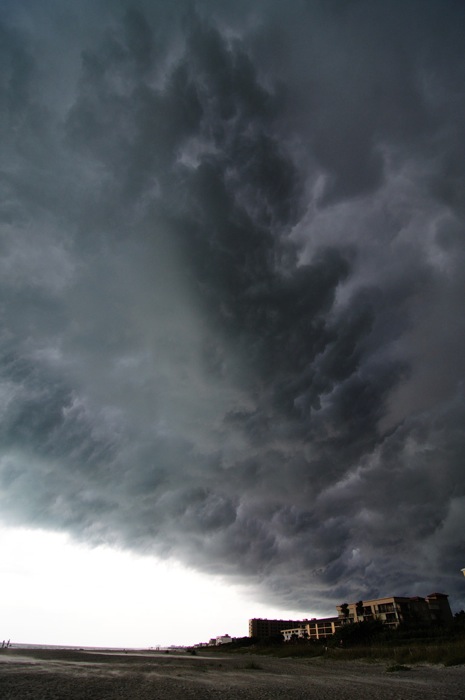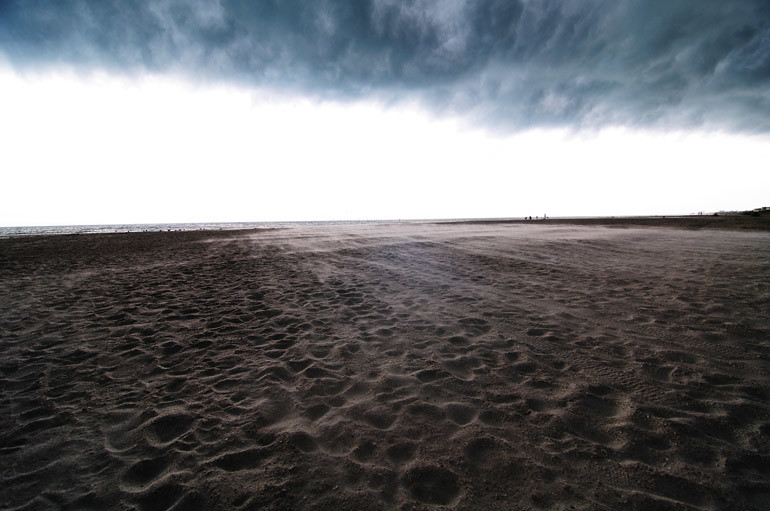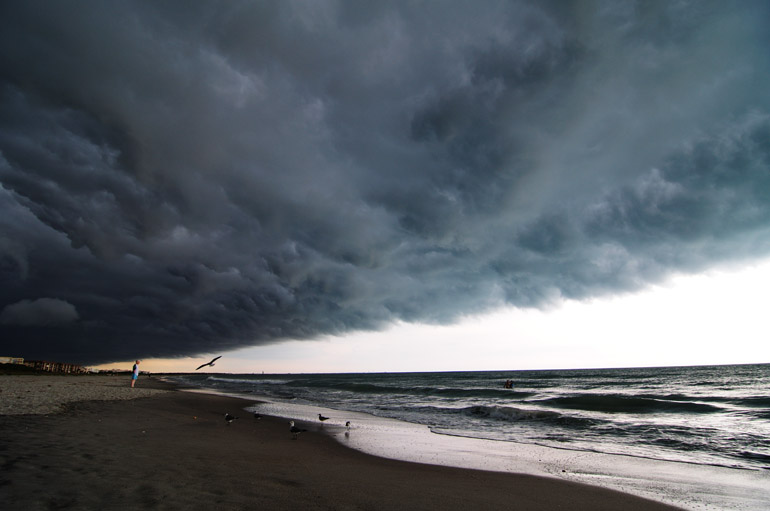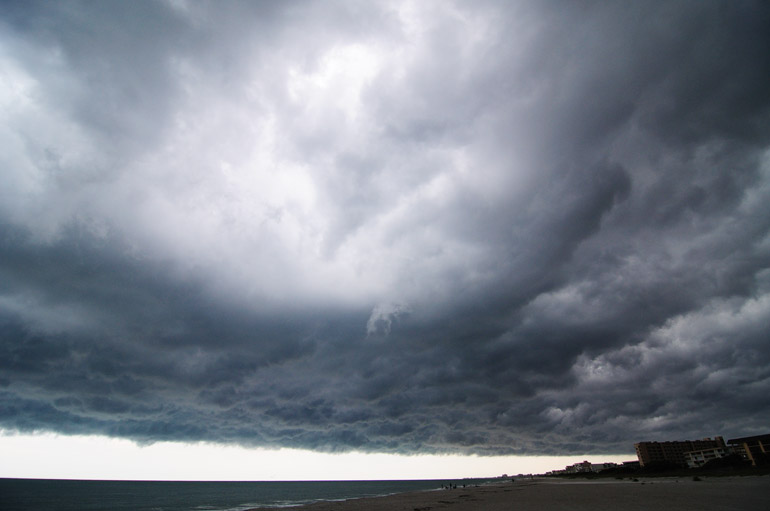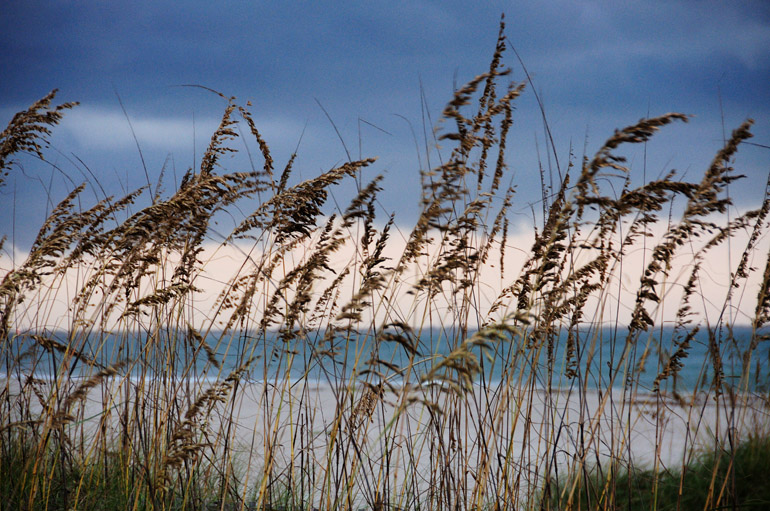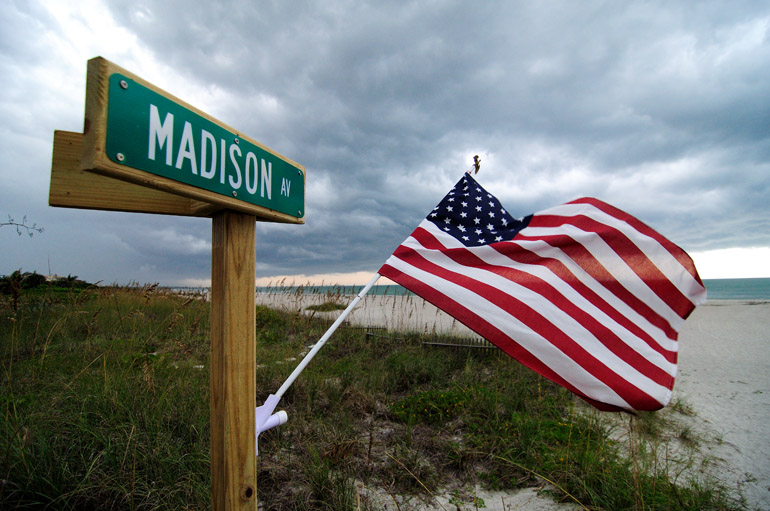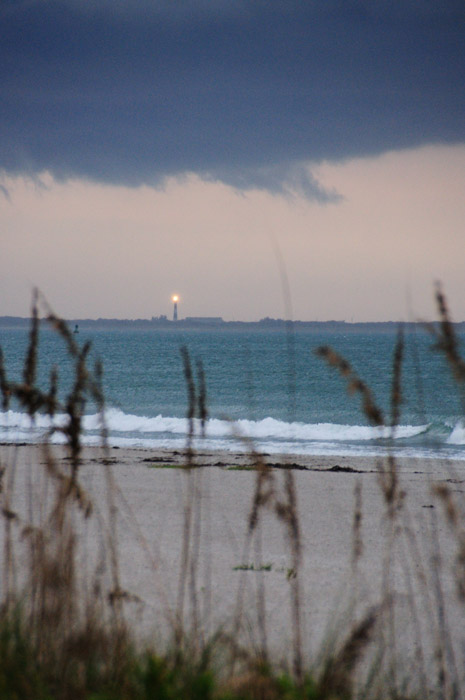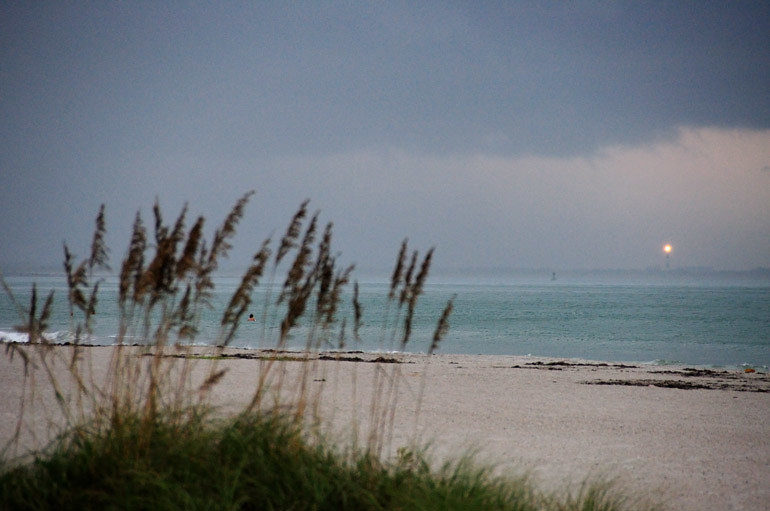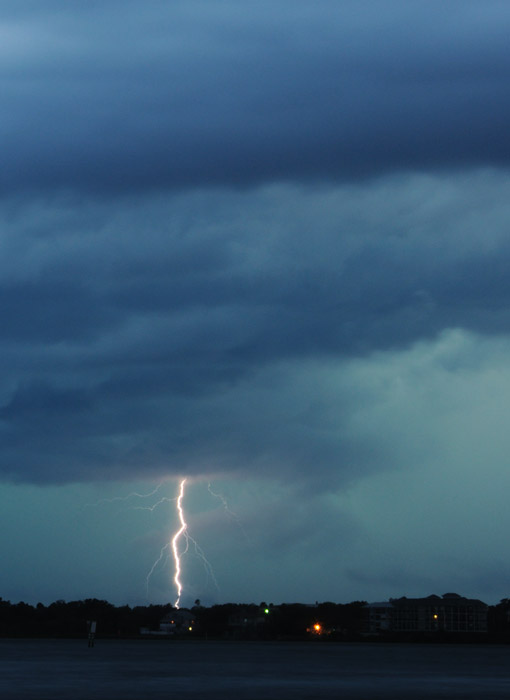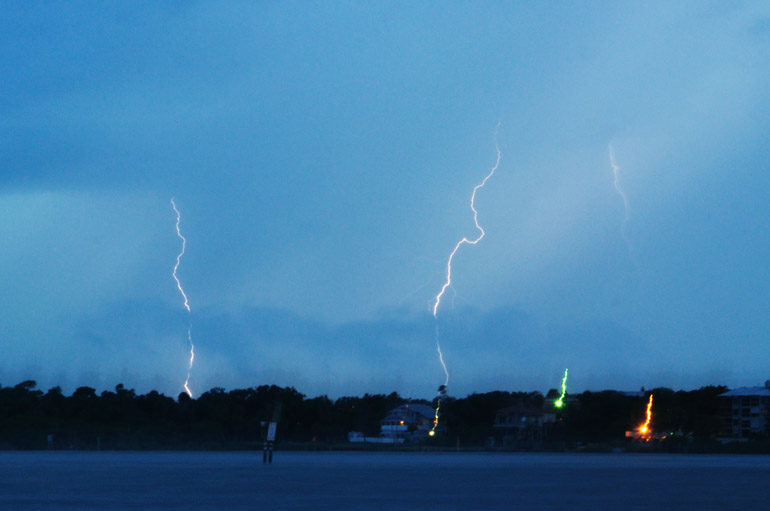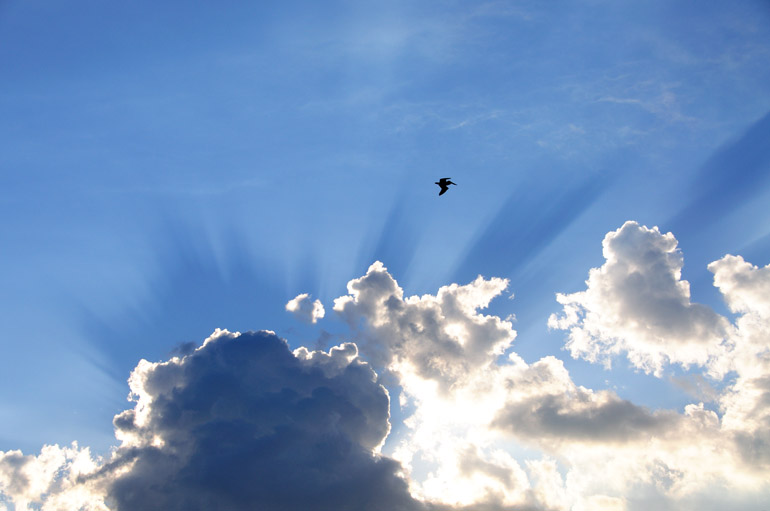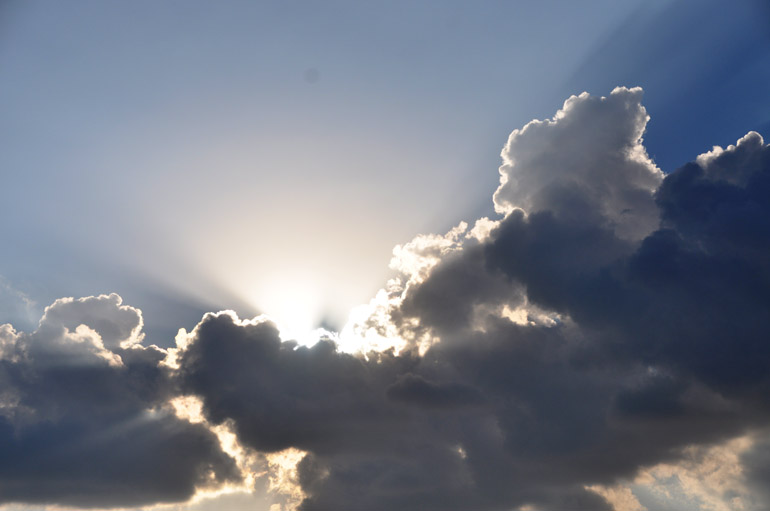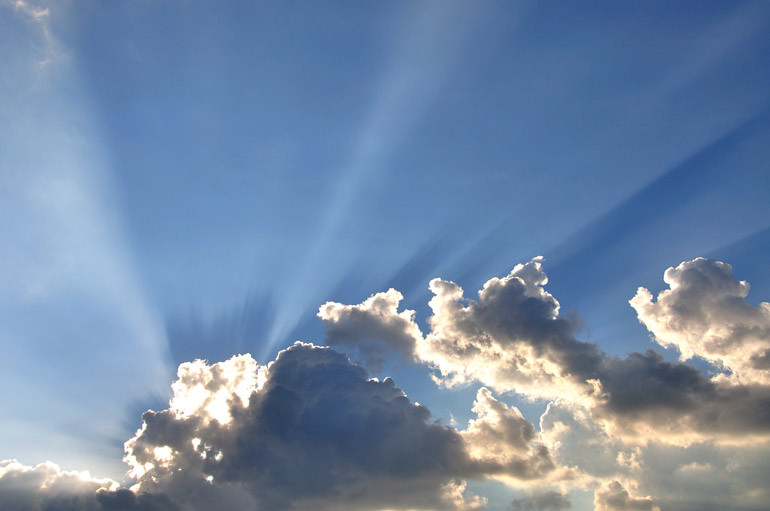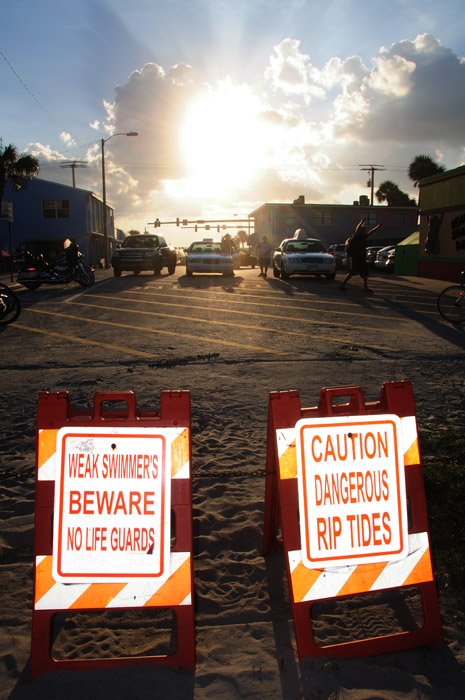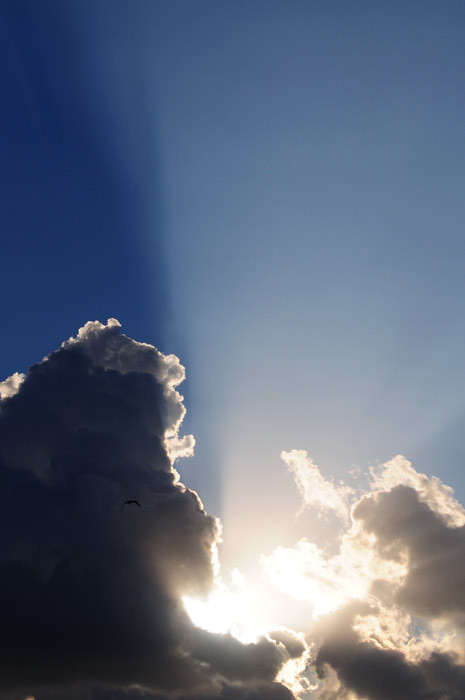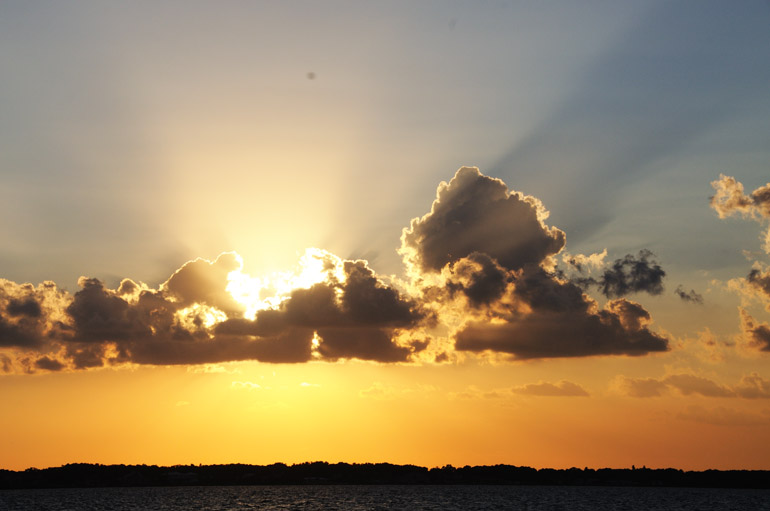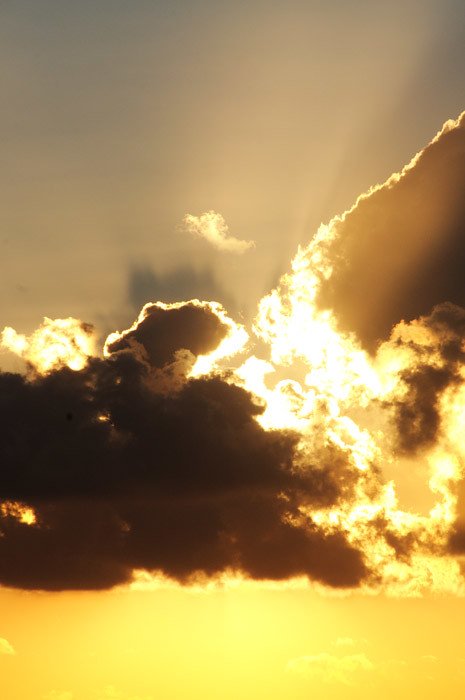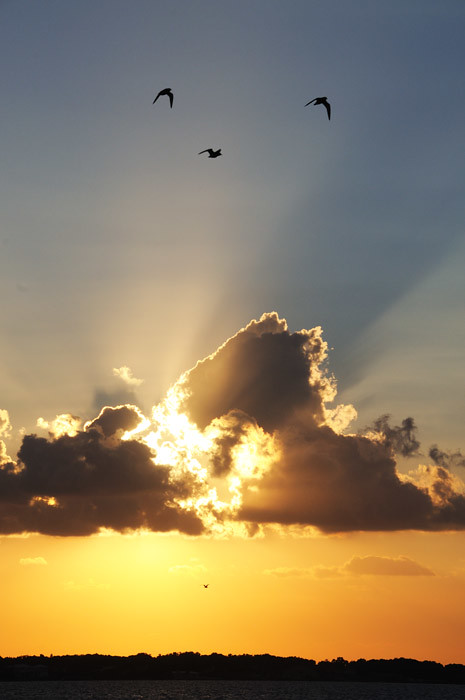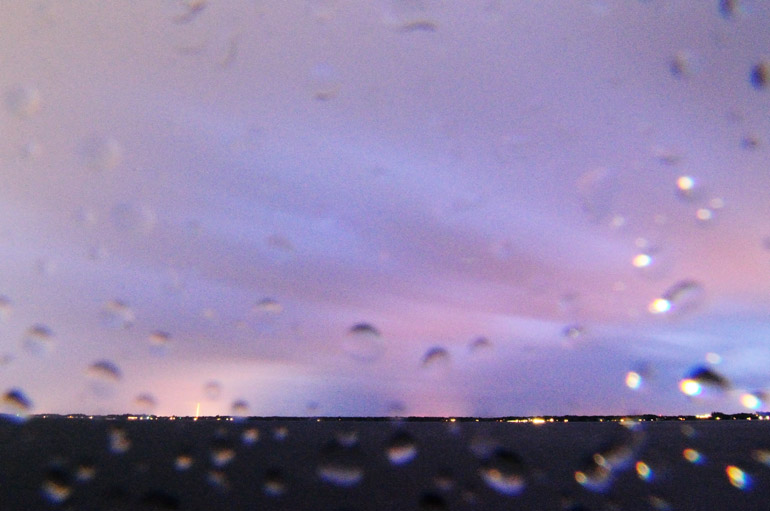
Rotten weather ruined an opportunity to shoot the very large Delta IV Heavy rocket as it carried a spy satellite into space. The only thing visible is a tiny streak on the horizon from the rocket, just before it punched through the clouds. It never reappeared.
A note: For two months, I've taken a rather coincidental hiatus from this blog. Not much has happened. The weather in Florida is dry, bland and not photogenic. I enjoy my friends. I have little spare time to go on aimless hunts for photographs. And, because of a computer failure, I've been without Photoshop for editing images. But now that I have Photoshop, I'm back. And since this story has only one photo, I figured it would be an effortless reintroduction to blogging...
Since I started this blog nearly three years ago, I've never missed an opportunity to shoot a space launch and post the resulting photos -- no matter how awful they may have been. Through trial and error, I've managed to get a handle on what it takes to capture a decent photo in various launch conditions.
The most difficult challenge is darkness. The first time I shot a nighttime launch -- of shuttle Endeavour from Titusville's Space View Park -- I failed miserably. Ever since, though, I've made some pretty decent exposures: up-close, stop-action photos and time-lapse "streak" shots that show the arcing trail of fire during a rocket's or a shuttle's ascent.
But the launch on Nov. 21 of a Delta IV Heavy -- the largest non-shuttle rocket -- was downright impossible to shoot. So the resulting photo, again, was awful. It was the first launch I've witnessed for which the weather was miserable: about a half-hour after sunset, heavy overcast, steady rain.
When you're 30 miles from the launch pad -- like at the Pineda Causeway, my location -- the only shot worth trying is a time lapse. I procrastinated and set up about 15 seconds before liftoff because I expected during the entire countdown that the launch would be postponed for weather reasons. I ran no test exposures. I was wet and -- believe it or not -- cold. And I forgot to change the ISO setting to 100, to limit graininess.
Instead, the shutter was open for 2 minutes, 45 seconds at 2000 ISO, which allows a lot of light into the camera and causes that graininess. The only thing that saved the exposure was the camera's f/22 aperture, the smallest opening possible for the lens I was using.
The resulting photo was raindrop-speckled and underexposed, likely because the orange glow of the Delta IV Heavy was visible for only two seconds. It quickly disappeared into the clouds, and the only trace of the rocket was a loud rumbling from its motors.
Its cargo: a top-secret satellite from the National Reconnaissance Office. Much about the flight -- the rocket's direction of travel, its window for launch -- was never made public. And if people weren't paying attention, they likely would've never known there was a launch in the first place.

